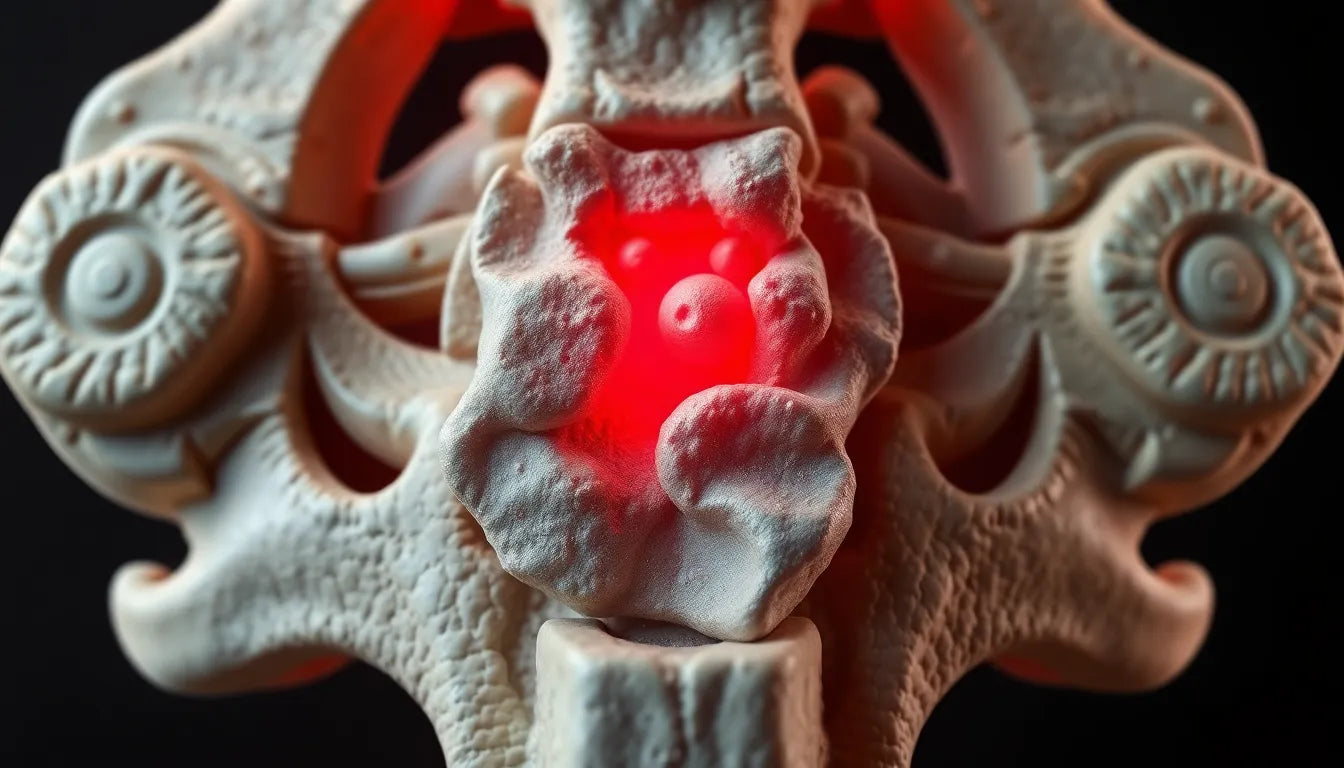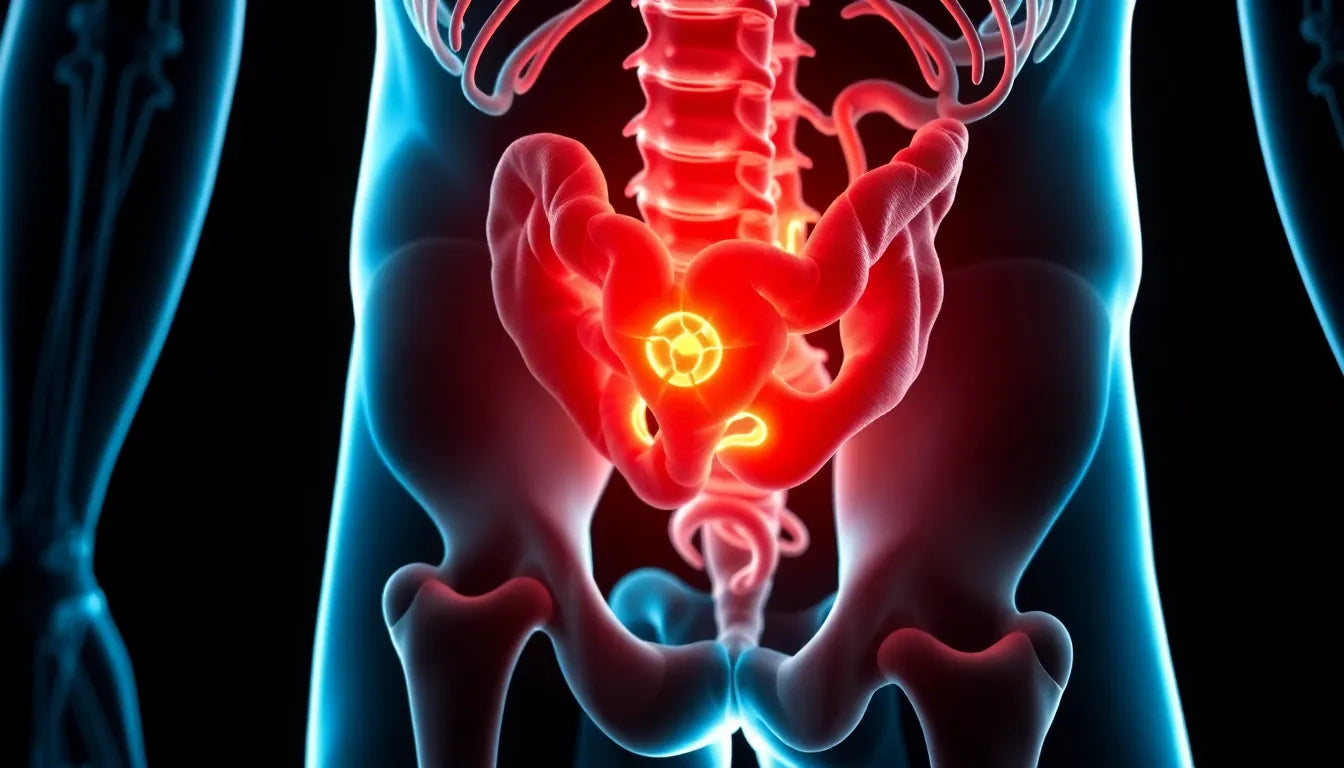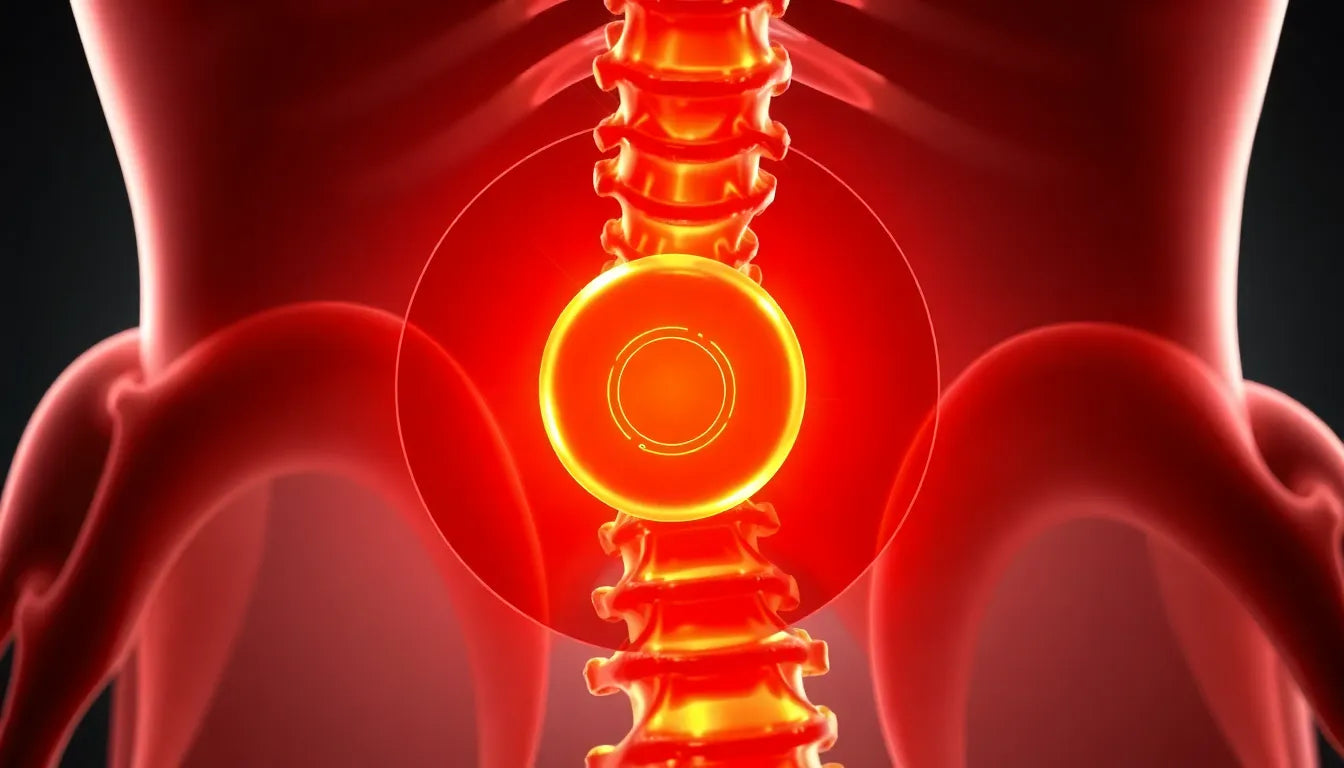Herniated discs are a common ailment that can significantly impact daily life, often causing pain and discomfort that disrupts routine activities. Understanding the progression of a herniated disc, particularly the final stages, is crucial for effective management and treatment. These stages, characterized by terms like "disc extrusion" and "sequestration," mark critical points in the condition's development and can influence the approach to care and recovery.
Overview of herniated disc stages
A herniated disc occurs when the soft inner core of a spinal disc pushes through a crack in the tougher exterior casing. This condition progresses through several stages, starting with disc degeneration, where the disc begins to wear down due to age or injury. This can lead to prolapse, where the disc bulges outward, followed by extrusion, where the inner disc material breaks through the outer layer. The final stage, sequestration, involves the extruded material breaking away and potentially causing significant nerve compression.
Disc extrusion and sequestration are critical components of the final stages of a herniated disc. During extrusion, the inner gel-like core of the disc pushes through the outer layer, which can lead to severe nerve compression and pain. Sequestration occurs when the extruded material becomes a free fragment within the spinal canal, posing additional risks and complications. Recognizing these stages is essential for determining the appropriate treatment strategy.
Purpose of the post
This post aims to provide a detailed exploration of the final stages of a herniated disc, focusing on the symptoms, potential complications, and available treatment options. By understanding these stages, individuals can better navigate their condition and seek timely medical intervention to manage symptoms effectively and prevent further deterioration. Whether you are experiencing the early signs of a herniated disc or are in the advanced stages, this guide offers valuable insights into managing your spinal health.
understanding disc extrusion and sequestration
In the final stages of a herniated disc, two critical conditions emerge: disc extrusion and disc sequestration. Disc extrusion occurs when the nucleus pulposus, the inner gel-like core of the disc, pushes through the annulus fibrosus, the tough outer layer. This breach can result in significant nerve compression, leading to intense pain and discomfort. As the condition progresses to sequestration, the extruded material can break away entirely, becoming a free fragment within the spinal canal. This detached fragment can travel and cause further complications by pressing against spinal nerves or the spinal cord itself.
Visualizing these processes can help in understanding the severity and implications of these stages. A diagram illustrating how the nucleus pulposus moves from extrusion to sequestration can provide a clearer picture of the structural changes occurring in the spine. Recognizing these stages is crucial for timely and effective intervention, as they can significantly impact both symptoms and treatment options.
symptoms of the final stages
The final stages of a herniated disc are often marked by pronounced symptoms due to nerve compression. Common symptoms include severe, radiating pain, particularly in the lower back or neck, depending on the affected area. This pain may extend to the arms or legs, accompanied by numbness or tingling sensations. In severe cases, patients may experience muscle weakness, affecting mobility and daily activities.
Potential complications from untreated disc extrusion and sequestration include chronic pain and the risk of permanent nerve damage. These complications can lead to long-term disability, emphasizing the importance of early detection and management. Understanding these symptoms is vital for seeking appropriate medical care and preventing further deterioration of the condition.
healing process overview
The healing process for a herniated disc involves several stages, as outlined by the Advanced Spine Center. Initially, the body responds with inflammation, a natural reaction to injury that aims to protect and begin the healing process. This stage is characterized by swelling and pain but is crucial for recovery.
Following inflammation, patients typically experience progressive improvement as the body continues to heal. During this phase, symptoms gradually lessen, and mobility may improve. Stabilization follows, where the spine begins to regain strength and function. Finally, long-term healing focuses on maintaining spine health and preventing future injuries.
| Stage of Healing | Symptoms Experienced | Typical Duration |
|---|---|---|
| Inflammation | Pain, swelling, limited mobility | 1-2 weeks |
| Progressive Improvement | Decreased pain, increased mobility | 2-6 weeks |
| Stabilization | Strengthening of the spine, improved function | 6 weeks to 3 months |
| Long-term Healing | Maintenance of spine health | Ongoing |
Understanding these stages and their duration can help patients set realistic expectations for recovery and focus on strategies that support each phase of healing. By recognizing the signs and symptoms associated with each stage, individuals can better manage their condition and work towards a successful recovery.
Treatment options for the final stages of a herniated disc
When dealing with the advanced stages of a herniated disc, a range of treatment options is available to help alleviate symptoms and promote healing. Initially, conservative treatments are often recommended, focusing on non-surgical approaches to manage pain and improve function.
Physical therapy plays a crucial role in conservative treatment, offering exercises designed to strengthen the muscles supporting the spine, improve flexibility, and reduce pressure on the affected nerves. Pain management strategies, including medications like non-steroidal anti-inflammatory drugs (NSAIDs) and muscle relaxants, can also provide relief. Additionally, lifestyle modifications, such as maintaining a healthy weight and avoiding activities that exacerbate symptoms, are essential for managing the condition.
In cases where conservative treatments fail to provide sufficient relief, surgical interventions might be necessary. Procedures such as microdiscectomy or laminectomy aim to remove the herniated portion of the disc or relieve pressure on the spinal cord and nerves. These surgeries generally offer favorable outcomes, with many patients experiencing significant pain reduction and improved mobility.
Innovative treatments are continually emerging in the field, offering new hope for those suffering from herniated discs. Techniques such as endoscopic spine surgery and regenerative therapies, including stem cell treatments, are being explored for their potential to enhance recovery and reduce the need for more invasive procedures.
Lifestyle and ergonomic adjustments
Making lifestyle and ergonomic adjustments is vital for supporting recovery and preventing further injury in individuals with herniated discs. Ergonomic aids can significantly enhance comfort and spinal health, especially for those who spend long hours sitting or standing.
- Invest in an ergonomic chair that supports the natural curve of the spine.
- Use a standing desk to alternate between sitting and standing, reducing pressure on the spine.
- Maintain proper posture by keeping your back straight and shoulders relaxed.
- Incorporate regular breaks and stretching into your daily routine to relieve tension and improve circulation.
- Engage in low-impact exercises, such as swimming or walking, to maintain strength without aggravating the spine.
These practical tips can help maintain spinal health and prevent further complications, complementing medical treatments and enhancing overall well-being.
Frequently Asked Questions
What are the signs that a herniated disc is worsening?
Signs that a herniated disc is worsening include increased pain, loss of mobility, and heightened numbness or weakness in the affected areas. If these symptoms progress, it is crucial to seek medical advice promptly.
Can a herniated disc heal on its own without surgery?
Yes, many herniated discs improve with conservative treatment over time. Physical therapy, pain management, and lifestyle changes can often lead to significant improvement without the need for surgery.
How long does recovery from a herniated disc take?
Recovery time varies depending on the severity of the herniation and the individual's response to treatment. Some people recover in a few weeks, while others may take several months. Adhering to a treatment plan and making necessary lifestyle adjustments can aid in a quicker recovery.
When should I see a doctor for a herniated disc?
If you experience severe pain, loss of bladder or bowel control, or significant weakness, it is essential to seek medical attention immediately. Early diagnosis and treatment can prevent further complications and improve outcomes.


















